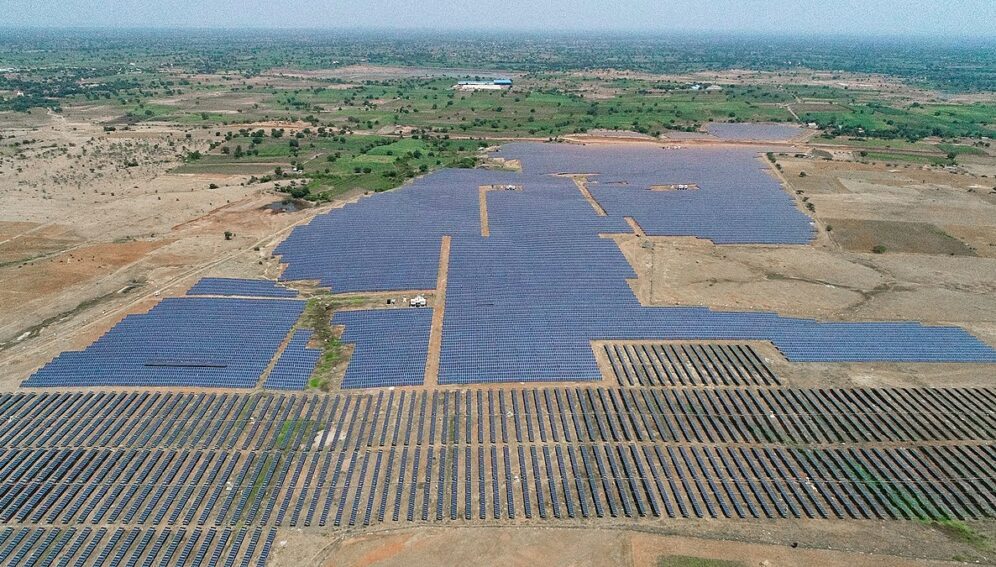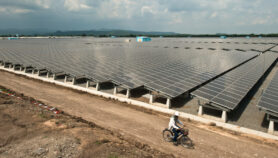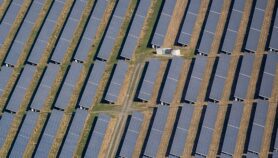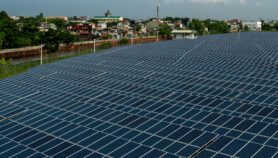31/03/22
Air pollution dims India’s solar energy potential

By: Ranjit Devraj
Send to a friend
The details you provide on this page will not be used to send unsolicited email, and will not be sold to a 3rd party. See privacy policy.
[NEW DELHI] Prospects for India achieving the target of generating 100 gigawatts of solar power in 2022 have waned because of high levels of atmospheric pollution.
Atmospheric pollution reduces solar power generation in two main ways: by absorbing and scattering the sun’s rays and by soiling solar panels, says Sagnik Dey, chair professor at the Indian Institute of Technology (IIT) Delhi.
A study carried out by IIT Delhi and published March in Environmental Research Letters, calculates that between 2001 and 2018 India lost 29 per cent of its solar energy potential as a result of atmospheric pollution — equivalent to an annual loss of US$835 million. As of March this year, India had only reached the halfway mark of 50 gigawatts of installed solar capacity, according to the research group, Mercom India.
“Aerosols, which include fine particulate matter, dust, mist and fumes suspended in the air, significantly reduce incoming solar radiation in what we call the ‘atmospheric attenuation effect’”
Sagnik Dey, Indian Institute of Technology (IIT) Delhi
“Put simply, aerosols, which include fine particulate matter, dust, mist and fumes suspended in the air, significantly reduce incoming solar radiation in what we call the ‘atmospheric attenuation effect’,” Dey, an author of the study, tells SciDev.Net. “This needs to be factored in when undertaking large solar energy projects.”
Such projects, says Dey, are also failing to account for the “soiling effect” of aerosols depositing on solar panels, blocking solar radiation from reaching the photovoltaic cells. “Since air pollution over South Asia has been on the rise, both effects need to be addressed and mitigation steps taken to maximise benefits from solar power installations,” he adds.
In heavily polluted regions particulate matter can cause a drop in photovoltaic solar power generation by more than 50 per cent, most of it caused the soiling of panels, according to a previous study. Aerosols in the atmosphere also work against solar power generation by increasing cloudiness and interfering with rainfall which could wash out particles.
Bhupendra Das, environmental researcher at Nepal’s Tribhuvan University, Kathmandu, and chair of Nepal Energy and Environmental Development Services, says that acid rain can also corrode solar power equipment and support structures, adding to maintenance costs.
Acid rain is caused by pollutants like sulphur dioxide and nitrogen oxides, released mainly through industrial and vehicular emissions, rising high into the atmosphere and mixing with water, oxygen and other chemicals to form corrosive acid droplets before falling back as rain.
“Mitigating air pollution would certainly reduce smogginess which can in turn improve solar power generation, and modelling studies do suggest that polluted clouds have a longer life and that aerosols inhibit precipitation,” Das tells SciDev.Net. “However, it is well to remember that there are several other factors to cloudiness than air pollution.”
The IIT Delhi study offers a set of measures that if implemented could help the Indian government achieve its solar energy production targets. One of these is fixed panels optimally tilted to take maximum advantage of solar radiation. Tilted panels do not accumulate aerosol deposits as easily as on panels set horizontally.
Articulated panels fitted with tracking mechanisms to constantly follow the sun are more expensive than fixed panels but have greater resistance to the accumulation of aerosol deposits. All configurations are, however, affected by atmospheric attenuation, the study says.
According to the study, the best way to enhance solar energy production is to rigorously implement government initiatives such as the National Clean Air Programme launched in 2019 with the aim of reducing fine particulate matter (PM2.5) concentration by 20 to 30 per cent by 2024 relative to 2017 levels.
Mitigating air pollution would “accelerate India’s progress to achieve its solar energy target at a lesser installation capacity, avoiding additional expenditure for the expansion of solar energy infrastructure”, the study says.
The Swiss IQAir world air quality report for 2021 shows the whole of northern India falling in a zone which exceeds the WHO standard of 10 microgrammes per cubic metre for particulate matter by seven to 10 times.
The IQAir report placed New Delhi as the world’s most polluted capital city for the fourth year running and listed 34 other Indian cities among the world’s most polluted urban centres.
IIT Delhi says the study is the first to quantify the impact of pollution on solar power generation in India, with earlier studies having focused on the harmful effects of poor air quality on public health and agricultural production.
This piece was produced by SciDev.Net’s Asia & Pacific desk.















